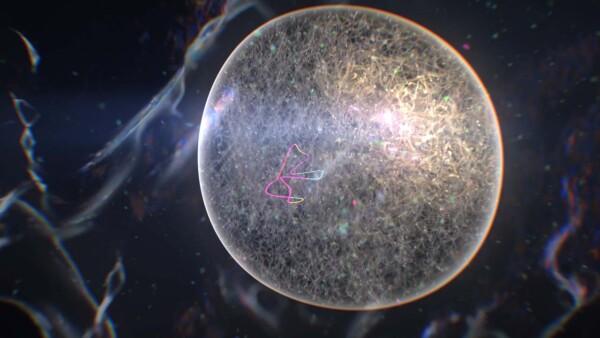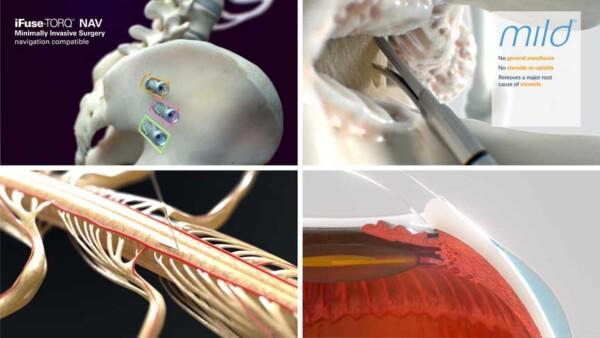
4 Common (and Costly) Mistakes to Avoid While Developing Your Medical Animation
Medical animations are worthy investments that deliver value across your business, but the truth is that high-quality 3D medical animation services are expensive. Add communication snafus and process hiccups to the mix, and the budget can quickly balloon. While our system is designed from the ground up to be able to accurately predict our costs from the beginning and avoid any scope creep, we’ve heard a lot of stories from our clients. In our nearly twenty years as a full-service scientific and medical animation studio, we’ve seen it all, but here are the four most common mistakes we work to help our clients avoid:
Mistake #1: Selecting a 3D Medical Animation Studio Without Scientific Expertise
This is a big one. Countless times we’ve had clients come to us after many months and dollars wasted on what turned out to be an unusable final product because they chose low-cost medical animators or ones without scientific expertise. When it comes to 3D medical animation services, you get what you pay for, so beware of lowball estimates—they’re a sign that they’re not paying experienced animators or those with graduate-level scientific education. Most commonly, we see a talented studio with a stellar portfolio falter because they lack the scientific expertise required to produce medically accurate animations that will survive the rigors of the scientific and legal review process. Best-case scenario, companies hiring non-scientifically trained studios should expect heavy hand holding throughout the process. Take it from us—hire a qualified 3D medical animation studio for the job.
Mistake #2: Not Keeping Your Medical and Legal Review Submission Guidelines Up Front Times in Mind During Scheduling
“That regulatory review process was a breeze!” said no one, ever. Seriously, plan for this like it’s the approval apocalypse. Even tiny errors can result in rejections, and big ones can explode production timelines, triggering vicious revision cycles that chip away at your team and take huge bites from the budget. This is sometimes an unavoidable feature of the review process, but when your timeline for deployment of your medical animation is critical, you have to factor these kinds of delays into your plan. To prevent this, meet with your legal team before starting work on your medical animation project.
Also, make sure you communicate submission guidelines for EVERY deliverable they’ll be reviewing with your medical animators so that they can keep things running smoothly on their end. Find out their submission days and turnaround time to ensure your production schedule reflects reality, and learn of any other potential pitfalls they foresee. Knowing these requirements up front and communicating them effectively to your team will go a long way to avoiding surprises in the review process. The last thing you want is for a project that once had plenty of time to switch to one with a tight deadline.
Mistake #3: Failing To Get Every Element Approved Before Moving Forward
There are three major deliverables in the medical animation development process: the script, the storyboards, and the final animation. On the 3D medical animation studio side, the production process is designed to ensure each deliverable is reviewed and approved before the next development phase can begin, but the various reviewing bodies on the client side sometimes creates complexities and communication chasms that allow minor items to fall through the cracks. Small oversights create big headaches, so make sure EVERY element is thoroughly reviewed before approving your studio’s deliverable.
For the script, this means all text, including voiceover narration and all words appearing on screen, both captions and labels. The storyboards show the narrative progression of the medical animation, shot by shot. It’s the blueprint the medical animators use to create the final product, so the action of every scene must be scrutinized in detail before giving approval. In the final phase of development, the animation process, changing the content can spiral costs for some studios. Make sure your approvals are bulletproof.
Mistake #4: Not Streamlining Feedback from Key Stakeholders
We’ve seen it before, and we’ll see it again—key stakeholders on the client side offering conflicting direction, or a rogue CEO coming in at the last minute to change key details, creating project upheaval. We can’t emphasize enough the importance of appointing a capable point person to lead the project on the client side, who can ensure that all stakeholders are involved in the review process. With so many departments weighing in, it’s essential for one person to be responsible for consolidating, confirming, and reconciling feedback from all stakeholders before communicating it to your development partner. When internal disagreement on the client side spills over into the development process, precious project hours are spent untangling confusion instead of creating groundbreaking medical animation. Know your stakeholders and make sure they’re in alignment!
Conclusion
The process of creating a high-quality medical animation is a complex, intricate, and costly endeavor. It demands not only artistic and technical skills but also a deep understanding of the illustrated scientific principle. To navigate this process successfully and economically, it's crucial to avoid common pitfalls. This includes selecting a 3D medical animation studio with scientific expertise, proactively managing your medical and legal review submission guidelines, ensuring meticulous approval of each development phase, and streamlining feedback from key stakeholders. By circumventing these common mistakes, businesses can effectively leverage the power of medical animations, resulting in cost-effective, impactful, and scientifically accurate visual tools that ultimately enhance the understanding of complex medical concepts.
You might also like




